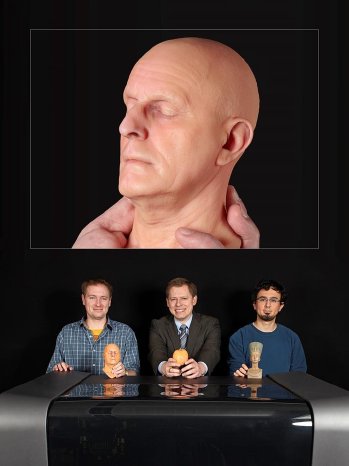We have already become used to copying paper documents, but three-dimensional objects, such as a Roman vase from the museum, can also be scanned and “printed” by means of a special printer. Unlike conventional printing, the printer will not spit out a sheet of paper, but a physical object. Although 3D printing has been known and established for around 30 years, its possibilities are limited: a copy of the Roman vase, for instance, is only roughly similar to the original. According to Dr. Philipp Urban, head of “3D Printing Technology” at Fraunhofer IGD, this is due to the color and specific color features of the objects.
“High-end 3D printers are already very well able to reproduce the shape of an object from plastic materials”, explains Urban. “When it comes to color, however, the limits are quickly reached.” For instance, an object’s color will significantly change under different types of light and lighting angles due to the optical characteristics of its material. Urban and his colleagues recently had a spectacular breakthrough in 3D color printing with their “Cuttlefish” software: “We are working closely together with other international researchers and developers of technical color sciences,” says Urban. “This expands our understanding of color in general and optical material characteristics in particular.” Within the scope of these cooperations, the organizers of the world’s largest and most important conference of technical color sciences, the IS&T Color and Imaging Conference, contacted the researchers in Darmstadt. This conference, at which the foundations for many technologies firmly anchored in our everyday lives were created, will open its gates in Europe for the first time from October 19 through 23, when not only leading scientists but also renowned representatives of many industrial companies active in this wide field will be in Darmstadt. One of the keynotes is to be held by Scott White, the brain behind the current 3D printing developments with printer manufacturer HP.
For more information:
https://www.youtube.com/watch?v=kJwf7VLxOQA
https://www.cuttlefish.de
http://www.imaging.org/ist/conferences/CIC/CIC23_Preliminary_Program.pdf


